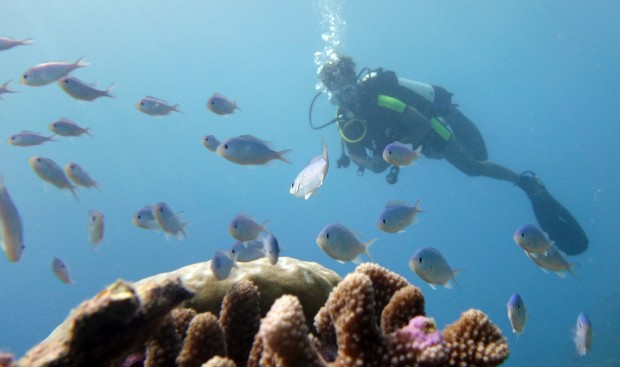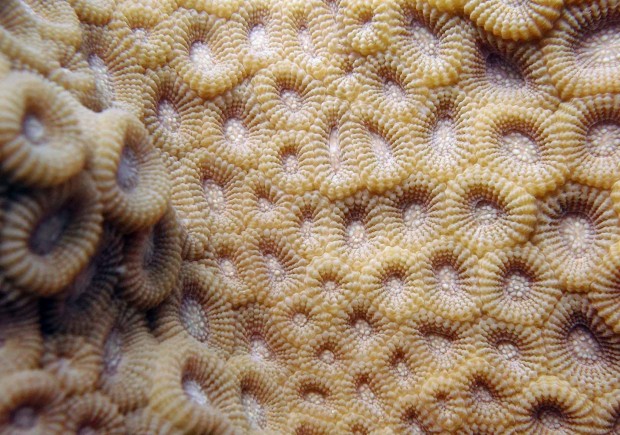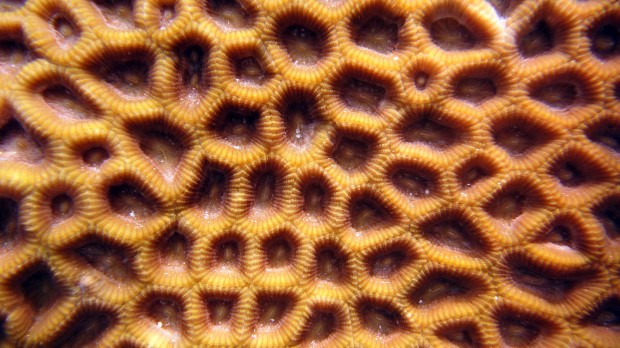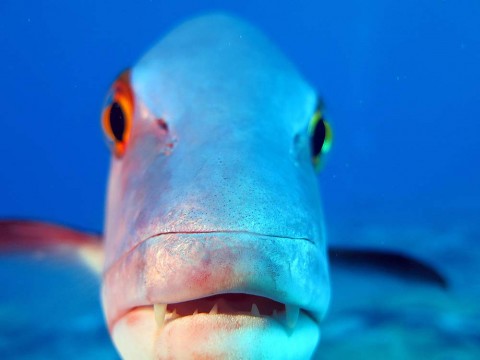2015 Darwin Science Expedition - Day 12 Reaching the Salomon Atoll
Salomon Atoll Ile Anglaise Oceanside
This morning involved collecting ARMS from the seabed – these were placed close to the edge of the drop off in about 5 meters of water just off Ile Anglaise in Salomon Atoll. These proved to be a lot easier to find than the ones in Peros Banhos which confounded us. Within a few minutes we’d located the site and were ready to bring in the devices. After levering them off the reef we returned them to our dinghy and motored them swiftly back to the research vessel. There Catherine began processing them…

This afternoon was Claudias opportunity to return to the underwater world. We plunged in and saw a number of lovely creatures. Got up close and personal with some anemones and Chagos Anemonefish and also enjoyed the lovely blue chromis clouds amongst the branches of acropora coral.
VIDEO https://www.youtube.com/watch?v=fXcvf-1y3u8
Fish are not the only creatures that find their home amongst the branching corals. We also enjoyed the sight of several cryptic crabs and shrimps that live amongst the coral branches.

Rooting around the reef you can really appreciate the great diversity of coral species here. In numerous shapes, sizes and colours. They really make for a vibrant and beautiful reef.

On our passage back to the research vessel we motored along the outside of the atoll and came across a large pod of spinner dolphin cavorting in the late afternoon sun. It was Claudias introduction to the resident pod off this atoll and the dolphins treated her to a real display. At one point we had an escort of dolphin fin to fin jumping in unison just inches ahead of our bow at least 20 of them alongside each other stretching to our port and starboard. What a fantastic end to the day…
VIDEO https://www.youtube.com/watch?v=k6NcNJTcJ5Q
From her dive during the day Anne has something to share with us.
Close Encounter of a Fishy Kind

The difference between a reef which is a bustling busyness of reef fish and one which is quiet, seemingly lifeless and devoid of fish is startling. I find myself looking around in bemused happiness when diving on a reef with its proper population of reef fish. On Chagos reefs this is fortunately the case on every dive, although it is an uncommon occurrence in most of the rest of the world.

Snappers are common inhabitants of a busy reef and the Bohar is a fairly common species of snapper. These reach a size of about 60cms and are apex predators, piscivores which eat other fish. A few days ago, surfacing with my camera from a photo survey of the reef to seaward of Danger Island on the Great Chagos Bank, I was startled and a little surprised when a fairly large Bohar appeared in front of me and started to nibble the front of my camera. My first thought was that he could see his reflection in the front of the lens and was going to attack a perceived rival, but these are not a territorial species so this was unlikely.
VIDEO https://www.youtube.com/watch?v=FI3UTGKlnEc
My visitor was not aggressive but seemed merely curious. When I was concerned that his nibbling might damage my camera I waved him away but he merely swam around me and came back to resume his inspection of my camera equipment by nibbling on my camera light. My fingers round the camera caught his attention at one point so I kept them out of his way.
It was the end of the dive and after a while I had to surface. I was reluctant to leave my new friend and liked to feel that he seemed disappointed to see me leave too!


